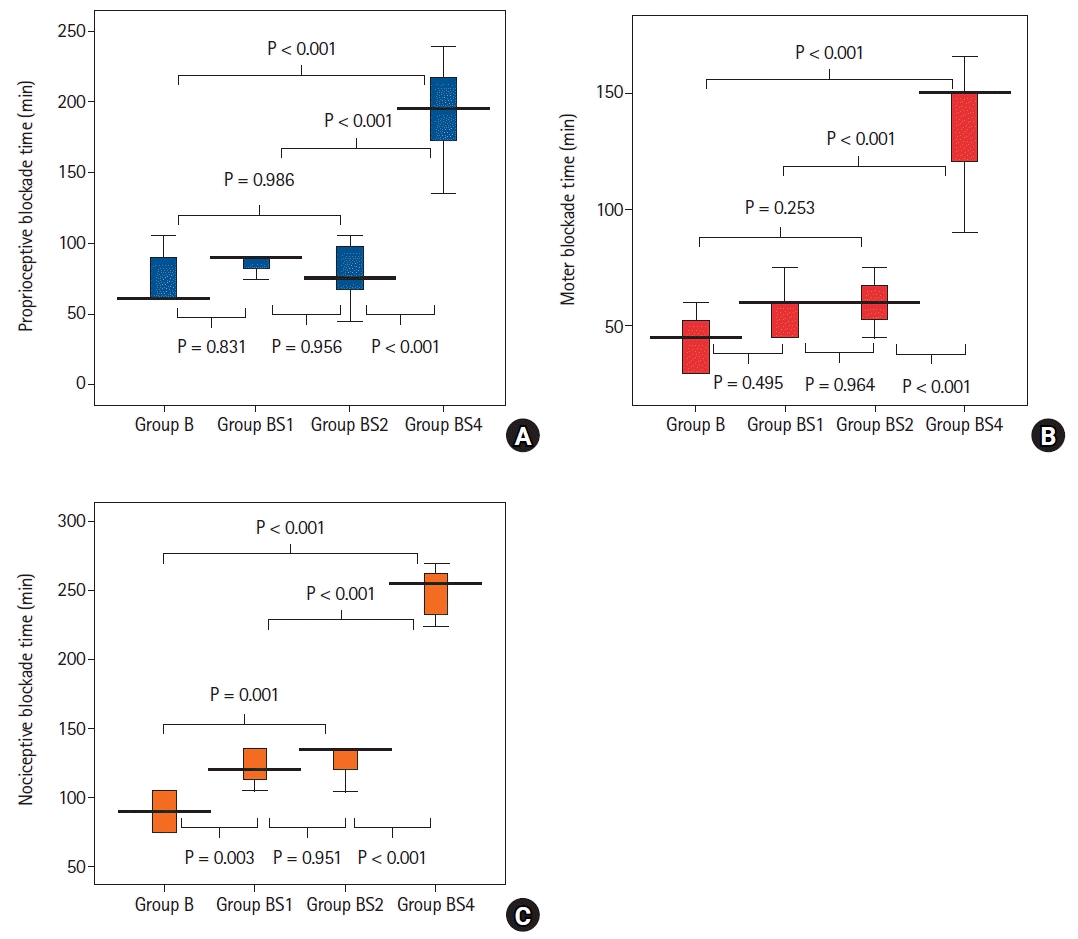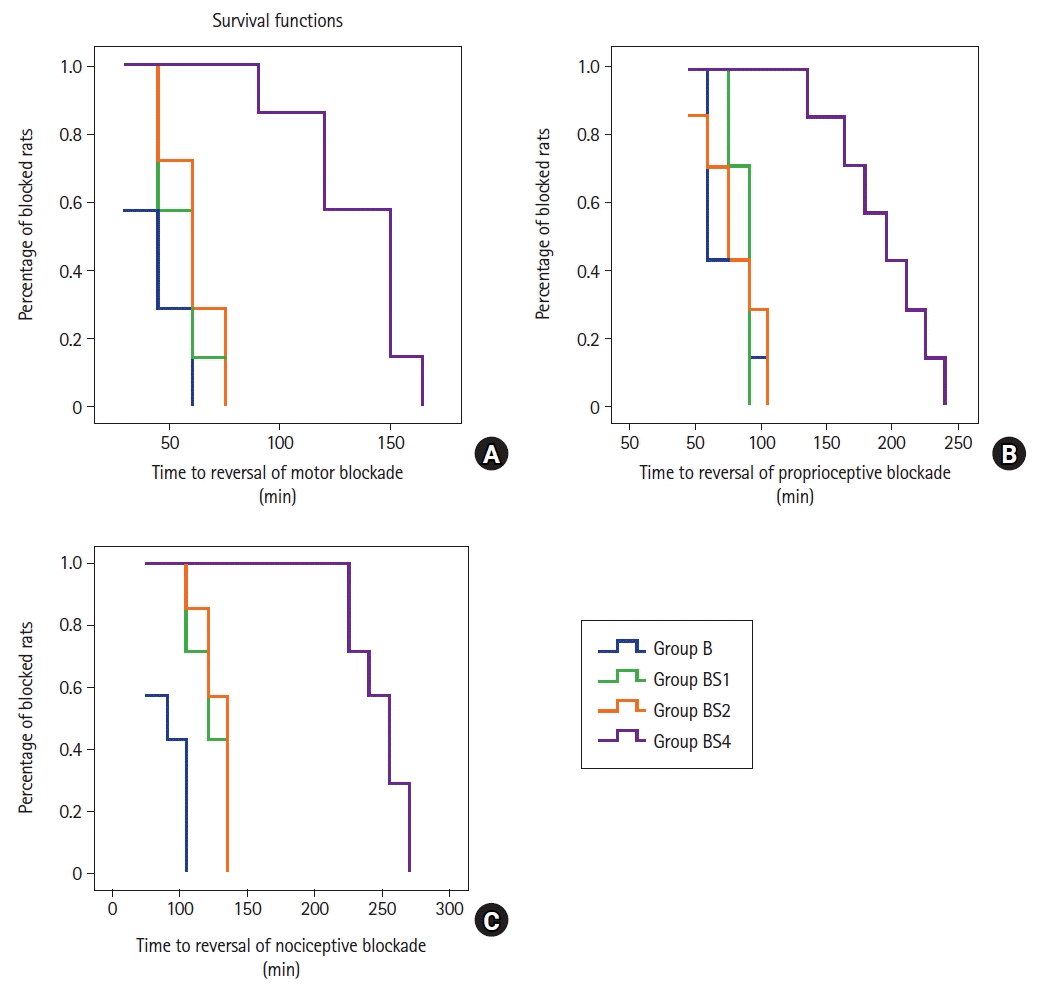1. Ruetsch YA, Böni T, Borgeat A. From cocaine to ropivacaine: the history of local anesthetic drugs. Curr Top Med Chem. 2001; 1:175–82.
2. Dixit V, Fathima S, Walsh SM, Seviciu A, Schwendt I, Spittler KH, et al. Effectiveness of continuous versus single injection femoral nerve block for total knee arthroplasty: a double blinded, randomized trial. Knee. 2018; 25:623–30.
3. Hutchins J, Apostolidou I, Shumway S, Kelly R, Wang Q, Foster C, et al. Paravertebral catheter use for postoperative pain control in patients after lung transplant surgery: a prospective observational study. J Cardiothorac Vasc Anesth. 2017; 31:142–6.
4. Desai N. Postoperative analgesia for shoulder surgery. Br J Hosp Med (Lond). 2017; 78:511–5.
5. Dinges HC, Wiesmann T, Otremba B, Wulf H, Eberhart LH, Schubert AK. The analgesic efficacy of liposomal bupivacaine compared with bupivacaine hydrochloride for the prevention of postoperative pain: a systematic review and meta-analysis with trial sequential analysis. Reg Anesth Pain Med. 2021; 46:490–8.
6. Rahangdale R, Kendall MC, McCarthy RJ, Tureanu L, Doty R Jr, Weingart A, et al. The effects of perineural versus intravenous dexamethasone on sciatic nerve blockade outcomes: a randomized, double-blind, placebo-controlled study. Anesth Analg. 2014; 118:1113–9.
7. Srinivas K, Karthika K. Effect of dexmedetomidine as adjuvant to ropivacaine in ultrasound guided supraclavicular brachial plexus block for upper limb surgeries. Indian J Anesth Analg. 2018; 5:760–6.
8. Chaudhary UK, Danesh A, Mahajan M, Kumar S, Verma V, Awasthi B. Comparison of effects of dexmedetomidine and clonidine as adjuvant to bupivacaine 0.25% in ultrasound guided supraclavicular brachial plexus block. Int J Res Med Sci. 2017; 5:4512–8.
9. Mancel L, Van Loon K, Lopez AM. Role of regional anesthesia in Enhanced Recovery After Surgery (ERAS) protocols. Curr Opin Anaesthesiol. 2021; 34:616–25.
10. Kopecký F, Vojteková M, Kaclík P, Demko M, Bieliková Z. Bupivacaine hydrochloride complexation with some alpha- and beta-cyclodextrins studied by potentiometry with membrane electrodes. J Pharm Pharmacol. 2004; 56:581–7.
11. Dollo G, Thompson DO, Le Corre P, Chevanne F, Le Verge R. Inclusion complexation of amide-type local anesthetics with β-cyclodextrin and derivates. III. Biopharmaceutics of bupivacaine-HP β-CD complex following percutaneous sciatic nerve administration in rabbits. Int J Pharm. 1998; 164:11–9.
12. Cereda CM, Tofoli GR, Maturana LG, Pierucci A, Nunes LA, Franz-Montan M, et al. Local neurotoxicity and myotoxicity evaluation of cyclodextrin complexes of bupivacaine and ropivacaine. Anesth Analg. 2012; 115:1234–41.
13. Serpe L, Franz-Montan M, Santos CP, Silva CB, Nolasco FP, Caldas CS, et al. Anaesthetic efficacy of bupivacaine 2-hydroxypropyl-β-cyclodextrin for dental anaesthesia after inferior alveolar nerve block in rats. Br J Oral Maxillofac Surg. 2014; 52:452–7.
14. Donati F. Sugammadex: a cyclodextrin to reverse neuromuscular blockade in anaesthesia. Expert Opin Pharmacother. 2008; 9:1375–86.
15. Dolu N, Şahi̇n L, Kaplan DS, Demi̇r T, Şi̇mşek H, Şahi̇n M, et al. The effects of bupivacaine combined with different adjuvants on block onset and duration and on ion channel expressions (SCN9A, TRPM) in sciatic nerve block in rats. Turk J Med Sci. 2016; 46:926–35.
16. Thalhammer JG, Vladimirova M, Bershadsky B, Strichartz GR. Neurologic evaluation of the rat during sciatic nerve block with lidocaine. Anesthesiology. 1995; 82:1013–25.
17. Estèbe JP, Gentili ME, Le Corre P, Le Verge R, Moulinoux JP, Ecoffey C. Sciatic nerve block with bupivacaine-loaded microspheres prevents hyperalgesia in an inflammatory animal model. Can J Anaesth. 2002; 49:690–3.
18. Sinnott CJ, Garfield JM, Thalhammer JG, Strichartz GR. Addition of sodium bicarbonate to lidocaine decreases the duration of peripheral nerve block in the rat. Anesthesiology. 2000; 93:1045–52.
19. Geyik FD, Eker D, Yuce Y, Erkal KH, Yavuzer D, Ozdemir HG, et al. The effect of sugammadex on time of sciatic block by perineural bupivacaine in rats. J Invest Surg. 2022; 35:955–61.
20. Pehora C, Pearson AM, Kaushal A, Crawford MW, Johnston B. Dexamethasone as an adjuvant to peripheral nerve block. Cochrane Database Syst Rev. 2017; 11:CD011770.
21. Brummett CM, Norat MA, Palmisano JM, Lydic R. Perineural administration of dexmedetomidine in combination with bupivacaine enhances sensory and motor blockade in sciatic nerve block without inducing neurotoxicity in rat. Anesthesiology. 2008; 109:502–11.
22. Hussain N, Brummett CM, Brull R, Alghothani Y, Moran K, Sawyer T, et al. Efficacy of perineural versus intravenous dexmedetomidine as a peripheral nerve block adjunct: a systematic review. Reg Anesth Pain Med. 2021; 46:704–12.
23. Meert TF, Melis W. Interactions between epidurally and intrathecally administered sufentanil and bupivacaine in hydroxypropyl-beta-cyclodextrin in the rat. Acta Anaesthesiol Belg. 1992; 43:79–89.
24. Uekama K, Hirayama F, Irie T. Cyclodextrin drug carrier systems. Chem Rev. 1998; 98:2045–76.
25. Tulgar S, Kose HC, Demir Piroglu I, Karakilic E, Ates NG, Demir A, et al. Comparison of effects of separate and combined sugammadex and lipid emulsion administration on hemodynamic parameters and survival in a rat model of verapamil toxicity. Med Sci Monit. 2016; 22:984–90.
26. Ozbilgin S, Yurtlu DA, Küçükoztaş B, Kamacı G, Korkut S, Yurtlu BS, et al. Evaluation of the effectiveness of sugammadex for digoxin intoxication: an experimental study. Cardiovasc Toxicol. 2018; 18:400–6.
27. Candido KD, Winnie AP, Covino BG, Raza SM, Vasireddy AR, Masters RW. Addition of bicarbonate to plain bupivacaine does not significantly alter the onset or duration of plexus anesthesia. Reg Anesth. 1995; 20:133–8.
28. Miyoshi M, Imoto T, Hiji Y. Alkalinizing water-soluble local anesthetic solutions by addition of cyclodextrin. Reg Anesth Pain Med. 1998; 23:176–81.






 PDF
PDF Citation
Citation Print
Print



 XML Download
XML Download